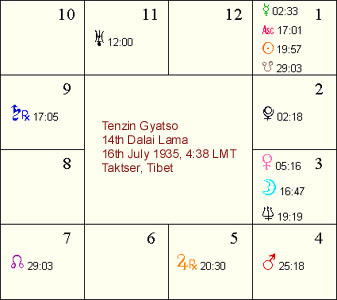[original post 2005-03-21] Light On Life by Hart de Fouw & Robert Svoboda is one of my most-valued and most-thumbed astrology reference books. The two main reasons for this is that it’s firstly a fabulous reference book, and secondly, perhaps more than any other Jyotish book, it gives me a sense of what Jyotish is like as practised in India. And although we aren’t in India, that insight is very valuable.
Light On Life packs an enormous amount of information into a Penguin paperback. If you need to know which planets associate with which metals, vegetables, human constitutions, tastes, colors or whatever, this is your book! It’s bound to be in here somewhere. It contains a brief rundown of most major topics, including dasas and nakshatras, tithis and yogas.
Among its most useful sections (for me) are those on types of karmas indicated in a chart, and chart interpretation principles. Every time I look at this book again I find something useful.
It’s also stuffed with stories giving glimpses into Jyotish in India. Discussing Gaja Kesari Yoga (a chart pattern involving the Moon and Jupiter): “On a business trip to Bombay, the owner of this horoscope [with Gaja Kesari Yoga] was approached on the streets by a strange sadhu (a wandering Hindu holy man), who announced with great force that our man (let’s call him K) must have a Gaja Kesari Yoga in his chart. Knowing his own chart well K was naturally amazed to to hear this, and asked the sadhu how he could possibly know. The sadhu replied that K’s strongly formed, round, vividly lustrous forehead indicated a powerful Gaja Kesari Yoga, and then forcefully suggested to K that this yoga would permit him to walk unharmed among poisonous cobras. The sadhu compellingly invited K to accompany him to a live cobra pit to prove the yoga’s power, but K adroitly extracted himself from this trial by serpent”.
If you are a total novice to Jyotish and like gentle introductions without being overwhelmed this may not be the place to start – although you will surely learn a lot! For students wanting to go a little further, or for novices who like to jump in at the deep end, it’s a terrific read.
My minor whinge about the book is it uses the North India triangular style charts, which I’m not good at as I use the square South Indian style. But they give the data for chart examples so I can re-create them in my charting software.


